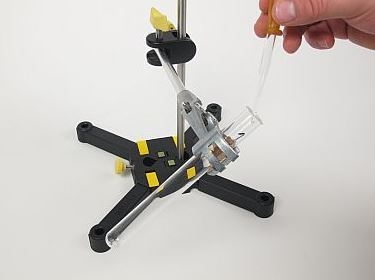Principle
The flow times given above are very dependent upon the angle of inclination and the amount of substance, they are therefore only given as examples. Polyhydric alcohols can form soluble complexes with copper hydroxide. They can also form inclusion compounds with other substances.
Point out that by the addition of glycol, the melting point of water can be decreased to -50 °C. The "wine scandal", the addition of diethylene glycol to wine in order to simulate the "oiliness" of high quality wines (mainly caused by glycerol) might also be subject to discussion.
Learning objectives
- Polyhydric alcohols exhibit similar properties to monohydric alcohols, but have, among others, higher boiling points and viscosities.
- Polyhydric alcohols can be differentiated from monohydric alcohols by the formation of a deep-blue copper complex.
Benefits
- Easy teaching and efficient learning by using interactive experimentation PHYWE-Software
- Experiment is part of a complete solution set with experiments for the topic Organic Chemistry matched with international curriculum: all topics are covered



